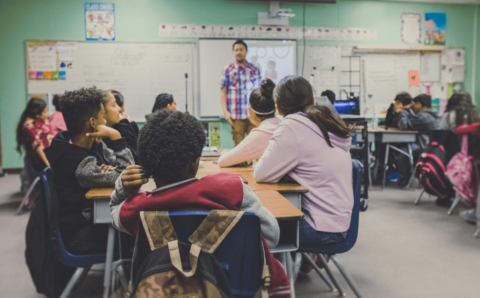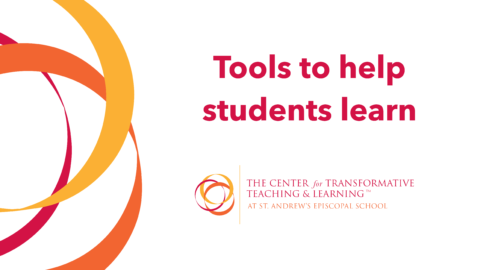At the CTTL, we’re focused on using the best of Mind, Brain, and Education Science research to help teachers maximize their effectiveness and guide students toward their greatest potential. Doing that often means addressing what we like to call “Learning Myths”—those traditional bits of teaching wisdom that are often accepted without question, but aren’t always true. We also like to introduce new insight that can change the classroom for the better. In our Learning Myths series, we’ll explore true-or-false statements that affect teacher and student performance; for each, we’ll dive into the details that support the facts, leaving teachers with actionable knowledge that they can put to work right away.
True or False? Class time is too valuable to use for tasks focused on student reaction and metacognition.
Answer: False! Research shows that interventions focused on helping students use metacognitive skills and knowledge can have a great impact on achievement. However, doing so is difficult and requires strategic effort over time on the part of the teacher—hence the benefit of doing it in class.
Metacognition (in short, learning to think about your own thinking) is a crucial part of student development. In fact, strengthening your students’ ability to use their metacognitive skills is one of the most potentially impactful strategies out there for helping them succeed. Extra points: in his analysis of what works in teaching, Rob Coe (formerly a professor at Durham University in the UK) found that metacognition is both high-impact and low-cost. Jackpot!
It’s a common misconception that successful students are masters of metacognition. To the contrary, high fliers in school, who rely on innate ability alone, often hit trouble later in their careers if they don’t build their metacognitive skills. While students who struggle in school are often more obvious cases for strengthening metacognition, it is important to remember that everyone benefits from practice.
The goal, then, is to create a culture in which each student can use their prior learning experience and self-knowledge to help them with any task they might confront. Of course, doing so is a challenge. So we’ve put together some tips to help you support metacognitive development in your classroom.
- When you introduce a new task or concept, make a point of asking your students to think about what they’ve experienced or learned in the past that could help them with what they’re currently facing for the first time. You can also model this yourself—research shows that it helps! Walk your class through how you’d approach the new idea if you’d never seen it before, then ask your students to offer up other pathways using what they know.
- Recognize that metacognition is more than simple reflection. Metacognition goes beyond just asking students to recount their experiences. It requires focus in one (or both) of two areas of questioning:
- What prior knowledge, skills, and learning strategies can I use in this new scenario? How is this similar and different to learning tasks I’ve faced before?
- How did the experience I just had change my knowledge of myself as a learner? Do I understand anything new about my strengths, weaknesses, or preferred strategies?
- Make metacognitive exercises and thinking a constant part of your class experience. Metacognition works best when it’s deeply embedded into the context of a class, not when it’s a standalone lesson or class period. It can even be damaging to mark that you’re heading into the “metacognition section” of a task or lesson. It needs to be a seamless part of the way you teach.
- Remind your students about the concept of neuroplasticity (check out our previous blog post for more on that) and encourage them to maintain a growth mindset. When they’re confident that they can always evolve and learn new skills—because you’ve told them so every day for a year—they’ll be less likely to be stymied by the unfamiliar, and more able to trust themselves to figure it out.
Of course, integrating metacognition into your classroom practices requires substantial effort and planning. If you’re intrigued about how to work more targeted reflection into in your everyday teaching, check out the Education Endowment Foundation’s “Metacognition and Self-Regulated Learning” report.
And look out for our blog post next week, which will further unpack how metacognition works—and how you can help develop it—through different stages of learning.
Here at the CTTL, we’re all about metacognition. Case in point: our newest endeavor, Neuroteach Global, involves constant reflection exercises that help teachers learn research-informed strategies for student success—in just 3-5 minutes a day, on a variety of devices.




